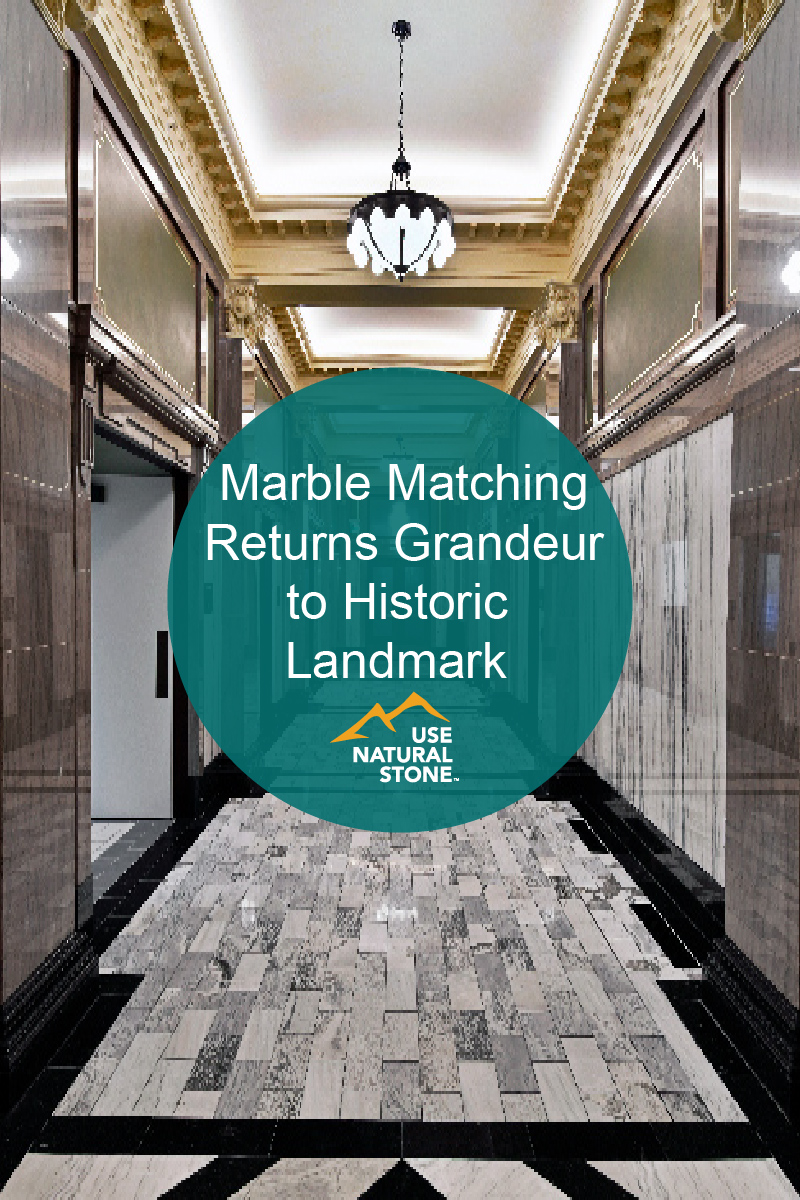How Hana Ishikawa Builds Solid History with Genuine Natural Stone

Photo courtesy of Site Design Group.
During a recent photo shoot, a photographer commented on how many of Hana Ishikawa’s projects feature natural stone compared to other firms. Ishikawa, the design principal of Chicago-based site design group, an architecture firm known for landscape and urban design, thought about the comment and said: “You know, I do use it a lot.”
Natural Stone—Different, Durable, and Desirable
One of the biggest reasons Ishikawa uses natural stone in her projects is because of its durability. “Natural stone has been around for millennia, and it’s much more durable than concrete,” she says. “It’s much more durable than porcelain. It’s more durable than most materials that we work with. Of course, this depends on the type of stone that we use but in general, it’s a very durable material that can withstand a lot in a public space.”
The type of stone she chooses for her projects really depends on the application. In the past, almost all their projects were based in Chicago. A decade later, half are in Chicago while the other half are elsewhere in the country. Since 100 percent of their work takes place outdoors, it’s imperative they consider the weather and the elements when choosing the stone.
“If it’s paving, especially in our Chicago climate that gets a lot of salt or wear and tear on it, we always tend to go towards granite, or another kind of stone like basalt,” she notes. She favors using boulders or other natural stone formation thanks to their unique characteristics. Those can range anywhere from limestone, which are softer sedimentary stones, all the way to granite. “We use the spectrum of stone really,” she adds. “It just depends on the application of how and which stone works the best.”
The harsh weather is one consideration, but manmade elements also come into play. In Chicago, salt is often used to melt ice or keep snow off the roadways and walking paths. The mineral can do a lot of harm to landscape materials like stone. Machinery like snowplows or lawn mowers can also come into contact with and potentially cause harm to the stone.
In parts of the country where salt and snow are not a concern, the choice of natural stone for things like roadways might be different. Factors like freeze/thaw patterns, wind, flooding, sun, and foot traffic must also be taken into consideration.
Natural Stone and the Pullman National Monument
A recent project Ishikawa was involved with was the Pullman National Monument, which opened last fall after about five years of work. Chicago’s only National Park Service site, it was recognized by former President Barack Obama as an essential part of our nation’s history.
She and her team had to reinterpret the landscape in an area with so much history. The team found the project both challenging and interesting. Due to major prior vandalism, very few of the site elements remained. When they were tasked to create a weathered version of the existing train tracks that were also walkable and accessible, it was natural for Ishikawa to suggest using natural stone.
“The reconstruction wanted to be a reinterpretation of the spatial quality of Pullman at its prime,” Ishikawa says. “We used stone to reinterpret and rebuild historic site elements, including the limestone historic worker’s gate, granite ballast stone at the tracks, and limestone site walls. We also used outcropping stone strategically sitting in landscapes to create a sense of ruin, while also fostering an impromptu seating element or a playful stepping stone.”
Safety and Sustainability in Public Spaces
Since all of Site Design Group’s work is done outdoors and often as part of a public space, it’s not unusual for the topic of public safety to get pulled into the conversation. What if someone climbs on the rocks and falls off? Will the stones have sharp edges that could injure someone?
She’s learned to navigate these types of concerns by taking the time to educate the client. She’ll compare how someone might use a boulder in the landscape like a bench or in place of a concrete curb, for example. It doesn’t take long to convince them that natural stone is just as safe. Also, being mindful of the type of stone is just as important as choosing any other type of hard material for a landscape.
Unlike other building materials, Ishikawa reminds clients that natural stone is natural. It’s part of the earth. “Not only is natural stone more aesthetically appealing, but it’s just more fun because it’s an actual product of the earth,” Ishikawa says. “It has character and interest and all of them are different.” These are just some of the reasons she and her firm use when educating clients who might have hesitations.
As more people consider sustainability as part of their projects, she also likes to remind clients about using local or native natural stones. She appreciates organizations like the Natural Stone Institute focusing on sustainability and the process by which natural stone is brought to market. Whether it’s using stone from local quarries or just using natural stone as your building material instead of a manmade material like concrete, Ishikawa feels we’re all doing our part to help with climate change issues.
“I think that’s part of the future,” Ishikawa adds. “It is really looking at how natural stone is better for the environment.”








